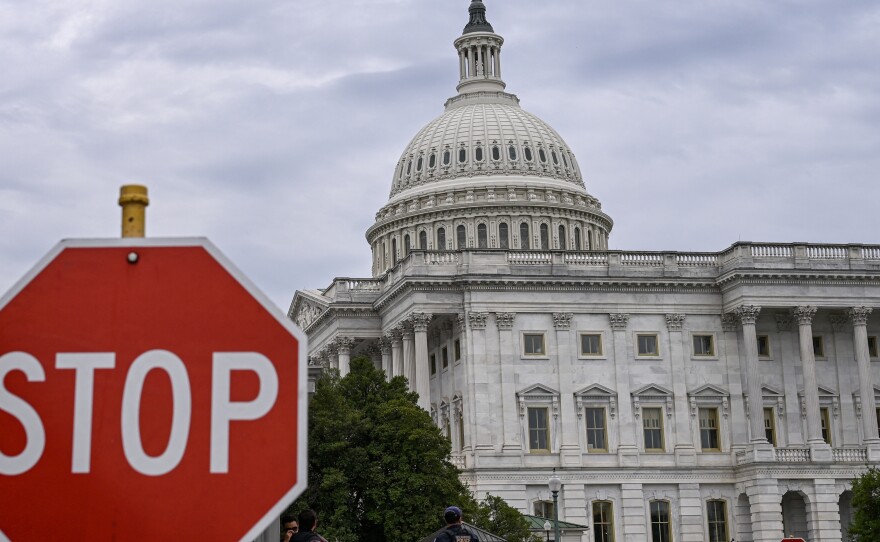The AMBER Alert system has become a critical tool in recovering abducted children across New York State.
With 1,268 children successfully recovered through the AMBER Alert system nationwide as of December 31, 2024, and at least 226 children rescued because of wireless emergency alerts, the program continues to prove its effectiveness in protecting our most vulnerable citizens.
This comprehensive guide explores how the AMBER Alert system operates in New York, recent developments, and what residents need to know.
Understanding AMBER Alerts in New York
AMBER stands for America’s Missing: Broadcast Emergency Response and was created as a legacy to 9-year old Amber Hagerman, who was kidnapped while riding her bicycle in Arlington, Texas, and then brutally murdered.
The system began in 1996 when Dallas-Fort Worth broadcasters partnered with local police to develop an early warning system.
Modeled after the Texas program, the New York State AMBER Alert Plan is a voluntary partnership between law enforcement, broadcasters and others to immediately involve the public, especially motorists, in the search for an abducted child.
Activation Criteria for New York AMBER Alerts
Not every missing child case warrants an AMBER Alert. The New York State AMBER Alert Plan can be activated when an investigating law enforcement agency has reasonable cause to believe that: An abduction of a child (under the age of 18) has occurred, and · The child is believed to be in danger of serious bodily harm and/or death.
Key Requirements Include:
- Age Limit: The child must be under 18 years old
- Reasonable Belief of Abduction: Evidence from eyewitness accounts or by eliminating other possibilities
- Imminent Danger: Child believed to be at risk of serious bodily harm or death
- Sufficient Information: Enough descriptive details to assist in recovery
- Timeliness: Alert must be practical based on time elapsed since disappearance
Familial abductions qualify only if a child is endangered by the actions of the abducting family member. Consider threats or use of violence while taking a child or a history of child abuse.
Recent AMBER Alert Activity in New York
The New York State Police announced that on Thursday, March 6, 2025, at 10:00 a.m., the New York State Police will conduct a TEST of the AMBER Alert system.
This test will help ensure the system remains fully functional and ready to protect children when needed.
Notable Recent Cases:
- A 2-year-old boy from Paterson, New Jersey was the subject of an overnight AMBER Alert
- The man who kidnapped a 9-year-old girl from an upstate New York park in 2023 and sexually assaulted her was sentenced Wednesday to 47 years to life in prison
- Multiple alerts have been issued for cases involving parental abductions where children were believed to be in danger
How AMBER Alerts Are Distributed
When an AMBER Alert is activated in New York, the information spreads through multiple channels:
Primary Distribution Methods:
- Wireless Emergency Alerts (WEA): Sent directly to compatible mobile phones in the affected area
- Television and Radio: Emergency broadcasts interrupt regular programming
- Highway Signs: Digital message boards display vehicle and suspect information
- Social Media: Alerts shared on official channels and platforms
- NY Alert System: Residents can sign up for free notifications by phone, email, text and fax
The Alert Process in New York
The activation process follows specific steps to ensure alerts are issued appropriately:
- Initial Report: Local law enforcement receives report of missing/abducted child
- Assessment: Officers determine if case meets AMBER Alert criteria
- Contact State Police: Local agencies contact NYS Police Special Victims Unit
- Review: State Police review case details and verify criteria are met
- Activation: If approved, alert is issued across all available channels
- Updates: Information updated as investigation progresses
Regional Coverage and Coordination
The Rochester region is in Alert Activation Region 2, which includes Orleans, Genesee, Wyoming, Monroe, Livingston, Wayne, Ontario, Yates, and Seneca counties.
New York’s system coordinates with neighboring states and Canadian provinces when necessary, especially in cases where authorities believe a child may be transported across borders.
Effectiveness and Statistics
The AMBER Alert system has demonstrated significant success since its inception:
National Statistics:
- 1,268 children have been recovered due to the activation of an AMBER Alert
- At least 226 recoveries are due to the use of Wireless Emergency Alert (WEA) messages
- There are 81 AMBER Alert plans throughout the United States
- The system is used internationally in 45 countries
Challenges and Controversies
Despite its successes, the AMBER Alert system faces several challenges:
Alert Fatigue:
Advocates for missing children have expressed concerns that the public is gradually becoming desensitized to Amber alerts because of a large number of false or overly broad alarms.
A July 2013 New York child abduction alert sent through the Wireless Emergency Alerts system at 4 a.m. raised concerns that many cellphone users would disable WEA alerts.
Strict Criteria Debates:
Some argue the strict activation criteria may exclude cases where children are still in danger but don’t meet all requirements.
It may seem like an individual missing child situation could benefit from the increased attention brought by an AMBER Alert, but according to New York State, the AMBER Alert program is less effective when it’s used too often.
What to Do If You Receive an AMBER Alert
When you receive an AMBER Alert on your device or see one displayed:
- Read Carefully: Note all details about the child, suspect, and vehicle
- Stay Alert: Look for matching descriptions in your area
- Don’t Engage: If you spot the suspect, don’t approach – call 911 immediately
- Share Responsibly: Share official alerts on social media to expand reach
- Keep Alerts Active: Don’t disable emergency alerts on your phone
Alternative Alert Systems
When cases don’t meet AMBER Alert criteria, other systems may be used:
- Missing Child/College Student Alerts: For cases not meeting full AMBER criteria
- Silver Alerts: For missing elderly individuals with cognitive impairments
- Blue Alerts: For suspects who have injured or killed law enforcement officers
- Child Abduction Response Teams (CART): Specialized units for all missing children cases
How to Sign Up for Alerts
New York residents can enhance their alert coverage by:
- NY Alert System: Visit alert.ny.gov to register for multiple notification methods
- Social Media: Follow official law enforcement pages for updates
- Mobile Settings: Ensure emergency alerts are enabled on your smartphone
- Community Networks: Join neighborhood watch programs that share alert information
The Future of AMBER Alerts
The AMBER Alert system continues to evolve with technology:
- Enhanced GPS Integration: More precise location-based alerts
- Social Media Expansion: Broader reach through platform partnerships
- AI and Facial Recognition: Potential future tools for faster identification
- International Cooperation: Expanding cross-border alert capabilities
Conclusion
The AMBER Alert system remains a vital tool in protecting children across New York State.
While debates continue about activation criteria and alert fatigue, the system’s track record speaks for itself with over 1,200 successful recoveries nationwide.
Every New York resident plays a crucial role in this safety network by staying informed, keeping alerts active, and remaining vigilant when alerts are issued.
Remember: if your child goes missing, contact local law enforcement immediately, then call the National Center for Missing & Exploited Children at 1-800-THE-LOST (1-800-843-5678).
Resources and Contact Information
- New York AMBER Alert Website: amber.ny.gov
- NY Alert Registration: alert.ny.gov
- National Center for Missing & Exploited Children: 1-800-843-5678
- Emergency: Always dial 911 for immediate assistance














